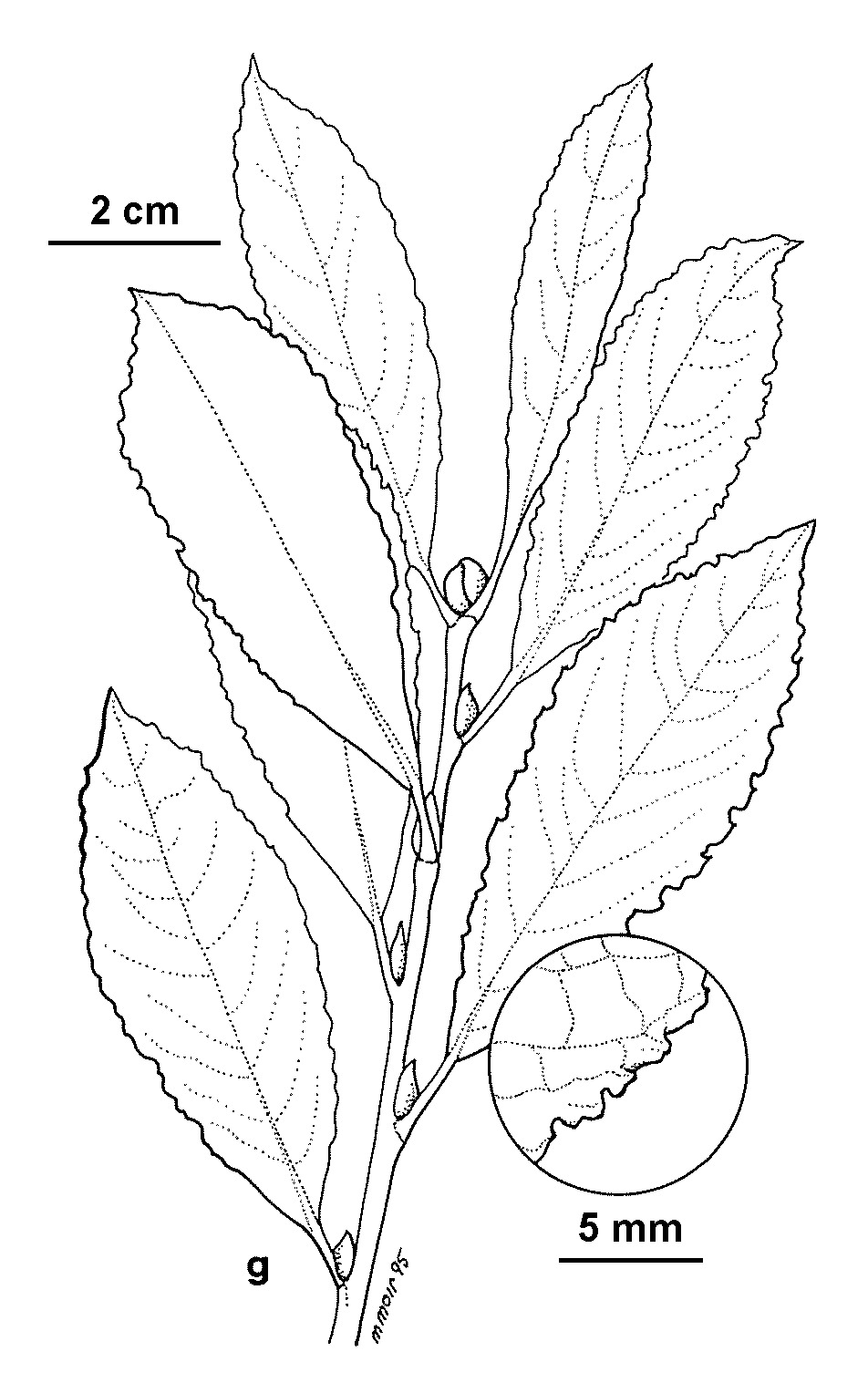
Large shrub or small broad-domed tree 6-10 m tall with very large catkin buds. Leaves variable in shape but mostly broadly-elliptic about 6-10 cm long, 3-4 cm wide, wrinkled and pale green above, densely soft-hairy below, margin shallowly toothed. Changes to a dull yellow in autumn. Leaf stalk reddish, 8-10 mm long. Male catkins to 4.5 cm long, females to 7 cm long. [S. caprea L.]
These trees are better known under the name S. caprea, but Carr (1996) considers them to be hybrids with S. cinerea as they all have striated wood indicating S. cinerea as a parent. Their reddish-brown twigs suggest S. cinerea while the broader wavy-edged leaves with soft hair below suggest S. caprea.
Naturalised in New South Wales and Victoria by vegetative propagation.
S. discolor Muhl. is the traditional European Pussy Willow.
VIC: Melbourne (Royal Botanic Gardens Victoria (Melbourne Gardens), around Central Lake); Malmsbury (Malmsbury Botanic Gardens).
Source: (1997). Salicaceae. In: . Horticultural Flora of South-eastern Australia. Volume 2. Flowering plants. Dicotyledons. Part 1. The identification of garden and cultivated plants. University of New South Wales Press.

Salix ×reichardtii 'Kilmarnock'
This cultivar is grafted on to S. caprea stock 2 m or more tall, the shoots hanging umbrella-like from the top.
Introduced by Thomas Lang of Kilmarnock, Scotland, who after the failure of his nursery business, came to Victoria and set up one of the most successful 19th century nurseries in Australia at Ballarat.